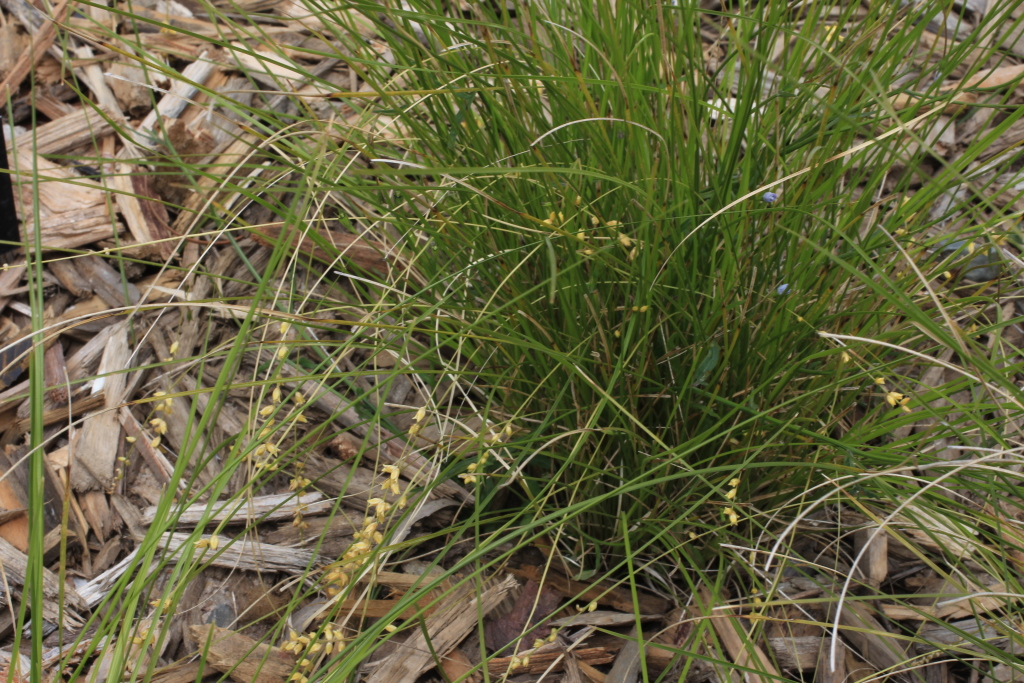Lomandra cylindrica
A.T.LeeTussock small and open, few leaved. Leaves terete, occasionally semiterete, 25–35 mm long, 1–2 mm wide, green; basal sheath gradually tapering, scarcely torn, reddish or purplish; apex acute. Male inflorescences unbranched, occasionally few-branched, c. one third to half as long as leaves, or rarely one-quarter or nearly as long as leaves; axes smooth; female flowers similar but shorter and rarely branched; axes sometimes papillose. Bracts ovate, 1–2 mm long, inner bract sometimes absent. Flowers with perianth yellow; male flowers globose, c. 2 mm long, outer perianth segments shorter and more membranous than the thick inner ones; female flowers subsessile, more tubular than the male flowers, c. 3 mm long.
EGL. Restricted in Victoria to Genoa Peak, East Gippsland. Widespread on the coast of New South Wales from Sydney to Moruya in dry sclerophyll forest on sandy soil.
Previously, this single collection from Victoria was thought to be a misidentification of an unusual form of L. filiformis (Conn 1994), owing to the semiterete leaves of the specimen. Lomandra filiformis is quite variable and relatively widespread throughout Victoria. It is principally distinguished from L. cylindrica by its leaves that are channelled, folded or inrolled, but not terete.
 Spinning
Spinning

